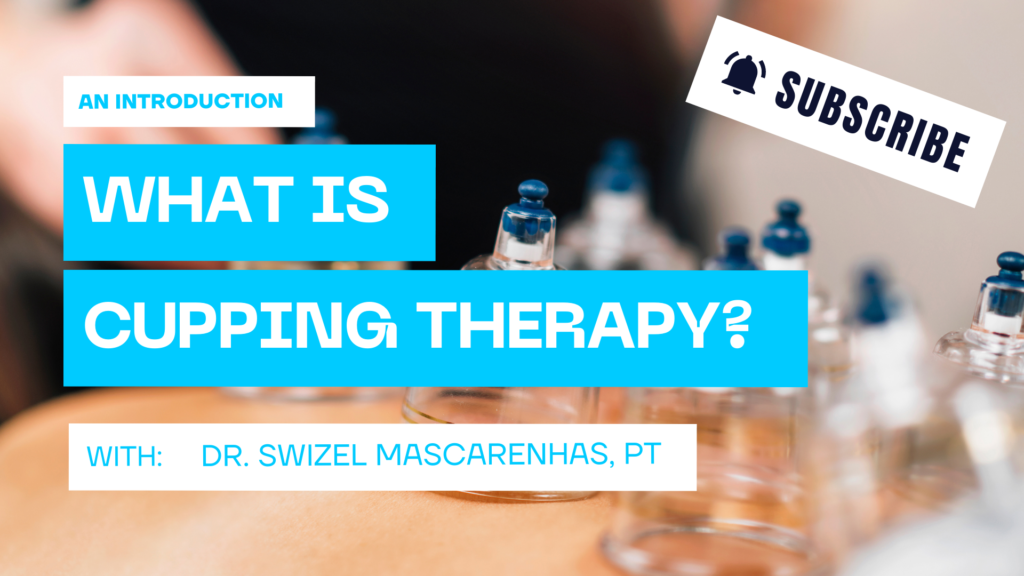
Introduction to Cupping Therapy
Cupping is a form of therapy that originated in China more than 2,000 years ago to treat a wide variety of health disorders. It has been used in the West for decades to encourage healing. Cupping is almost like a deep tissue massage with suction and decompression. Chinese medical practitioners believe cupping helps keep the body in balance, increases overall blood flow, reduces pain and promotes healing. Athletes use this type of therapy to decrease muscle recovery time. However, cupping therapy is not a substitute treatment for conventional therapies but a complementary therapy.
Cupping Procedure
Special cups are placed on your skin, around various parts of your body to create suction. The cups may be made of glass, plastic, or silicone. Cups are placed on the skin, creating a vacuum by suctioning out air. The underlying tissue (skin and blood vessels) is sucked part way into the cup, which is why it leaves marks on the skin. The purpose is to help circulation, relieve pain, and loosen up muscles and joints.
Methods of Cupping
Wet Cupping: Mild suction is created by leaving a cup in place for about 3 minutes. It is then removed and a small scalpel is used to make light, tiny cuts on your skin. Next, a second suction draws out a small quantity of blood. After the procedure, you may be given an antibiotic ointment and bandage to prevent infection. Your skin should look normal again within 10 days.
Dry Cupping: Used specifically in physical therapy as a form of soft tissue mobilization by using myofascial decompression to release tissue restrictions in skin and muscle. It promotes local circulation in the cupped area.
Needle Cupping: The therapist first inserts acupuncture needles and then puts cups over them. It’s often used to treat knee and elbow joints.
Fixed and Moving Cupping: fixed is where cups are placed on the body and left in place without being moved. With moving cupping, massage oil/ cream is rubbed on your skin in selected places. The cups are placed over the areas to be treated. Therapist will then slide the cups around the body.
Effects
Physical Therapy doesn’t use cupping by itself as a treatment. It is just one method which is used by our therapists in the overall rehabilitation of musculoskeletal conditions with the goal of improved mobility, stability, and movement patterns of the body.
Benefits to cupping are pain and inflammation reduction, a sedation of the nervous system, an increase of circulation to the treated area, a softening of adhesions and stiff connective tissue, and the ability to impact deeper, more hard-to-reach muscles and other soft tissues.
Skin: Improved metabolism in skin tissue, better functioning of sebaceous and sweat glands, improved healing and improved skin resistance.
Muscles: Stimulates blood flow and lymphatic drainage.
Joints: Increased blood flow and secretion of synovial fluid.
Digestive system: Increased peristalsis and secretion of digestive fluids, better digestion and excretion.
Blood: Improved blood circulation, improved functioning of RBC and WBC.
Nervous System: Stimulates sensory nerves of skin, Improves ANS.
What should you expect during a cupping treatment?
Cupping is performed as an adjunct with other physiotherapy treatments. For best results, you may also want to fast or eat only light meals 2 to 3 hours before your cupping session.
The practitioner will place cups on your skin.
You’ll feel a sucking/tight sensation and pressure as the cups are suctioned. However, many people describe the feeling as relaxing and soothing, not painful.
Depending on the type of cupping, the practitioner may leave you to rest for a few minutes before they return to remove the cups.
Your skin may turn red and show light bruising after your session.
The cup is kept in place for a set time, usually between 5 and 10 minutes
How long will it take for cupping marks to disappear?
You will notice some bruising around the treated area. Bruises may be pink, red or sometimes purple or dark brown. Bruising typically goes away within one weeks. You may also notice changes on the surface of the skin. It’s important to take care of yourself after a treatment. Stay warm, cover up, drink plenty of water and eat wholesome foods. You should also avoid swimming or showering within three hours of a cupping session.
What is cupping used for?
- Lower back pain
- Neck and shoulder pain
- Headache and migraine
- Knee pain
- Facial paralysis
- Lumbar disc herniation
- Cervical spondylosis
- Brachialgia, the pain produced by a trapped nerve in the neck
- Carpal tunnel syndrome
- Rheumatoid arthritis
What Should I Avoid After Cupping Therapy?
To make sure you get the most from your treatment, you should avoid the following items for at least 4-6 hours post treatment.
Extreme Heat or Cold: cupping helps open the pores and stimulate muscle and fascia tissue. Exposing yourself to extreme temperatures can damage the release of tension in these areas, causing stiffness, aching, and pain.
Intense Exercise: The span of time immediately after your cupping session isn’t great for exercise. If you need to move, an easy walk or light stretching is acceptable.
When not to use cupping
Avoid cupping if:
- You use blood-thinning medication.
- Have a sunburn, wound, skin ulcer
- Experienced a recent trauma e.g. fracture
- Have an internal organ disorder
- Have thinning skin
- Excessive swelling
Side Effects
Cupping is a low-risk therapy. The side effects will typically occur during your treatment or immediately after. Light headedness, sweating, fatigue, muscle soreness or nausea may be experienced.
Skin infections, bruising, itching or scarring are rare symptoms.
In the following video, Dr. Swizel Mascarenhas, PT, one of our physiotherapists at the Chowgule Clinic in Margao, Goa, is introducing the concept of cupping therapy.
Check out our Youtube channel, Instagram, Facebook or blog to learn more about us, Physiotherapy methods and conditions. We post new topics every week!
